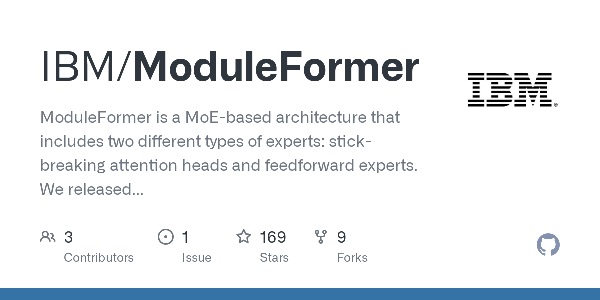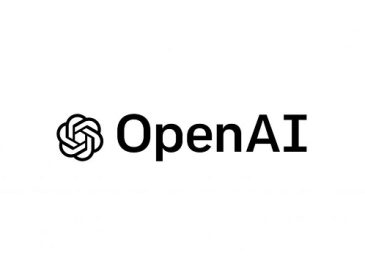In a move that signals its commitment to advancing the field of language models, IBM has entered the arena with the release of open-source Mixture-of-Experts (MoE) models. These sparse models are designed to optimize computation without compromising accuracy, making them a valuable addition to the landscape of language modeling.
Language models have long been at the forefront of artificial intelligence research, enabling machines to understand, generate, and interact with human language. The advent of large-scale models has revolutionized natural language processing, but they often come with significant computational demands. Sparse models like IBM’s MoE models aim to address this challenge by finding a balance between efficiency and performance.
Sparse models, such as IBM’s MoE models, achieve computational savings by focusing resources only on relevant parts of the input. By distributing the workload across a network of experts, these models can make efficient predictions while maintaining high accuracy. The architecture of IBM’s MoE models comprises stick-breaking attention heads and feedforward experts, which work together to handle complex language tasks effectively.
Training sparse models like MoE models can be a complex endeavor, requiring careful fine-tuning and optimization. Recognizing this challenge, IBM has not only released the models themselves but also shared their architecture and code. By doing so, IBM aims to foster collaboration among researchers and practitioners, facilitating the advancement and widespread adoption of these innovative language models.
The release of open-source MoE models by IBM represents a significant contribution to the field. Researchers and developers now have access to a powerful toolset that combines efficiency and accuracy, paving the way for new applications and advancements in natural language processing. These models have the potential to enhance various domains, including machine translation, sentiment analysis, question-answering systems, and more.
IBM’s MoE models also align with the growing trend of open-source initiatives in the AI community. Open-source frameworks and models foster collaboration, accelerate innovation, and democratize access to cutting-edge technologies. By sharing the architecture and code, IBM demonstrates its commitment to driving progress in the language model space and empowering others to build upon their work.
As IBM throws its hat into the language model arena, it adds another dimension to an already vibrant and dynamic field. The release of open-source MoE models showcases IBM’s dedication to advancing the frontiers of AI and natural language processing. By providing researchers and developers with the tools they need to explore and experiment with sparse models, IBM is contributing to the collective efforts aimed at pushing the boundaries of language understanding and generation.
IBM’s entry into the language model domain with its open-source Mixture-of-Experts (MoE) models marks a significant development for the AI community. These sparse models offer a balance between computation efficiency and accuracy, and IBM’s decision to release them along with their architecture and code further encourages collaboration and innovation. As the field of language modeling continues to evolve, the contributions from organizations like IBM play a crucial role in driving progress and propelling the advancements in natural language processing.
IBM ModuleFormer: Advancing Language Models with Modularity
IBM’s ModuleFormer is a state-of-the-art architecture that leverages the concept of Mixture-of-Experts (MoE) to improve the efficiency, accuracy, and modularity of language models. With its unique design and open-source availability, ModuleFormer represents a significant advancement in the field of natural language processing.
The architecture of ModuleFormer encompasses two types of experts: stick-breaking attention heads and feedforward experts. This combination allows for effective handling of complex language tasks while optimizing computation. By distributing the workload across these experts, ModuleFormer achieves a balance between computational efficiency and preserving accuracy.
The emergence of ModuleFormer has been driven by research and development efforts at IBM. A paper titled “ModuleFormer: Modularity Emerges from Mixture-of-Experts” explores how modularity can be achieved through language model pretraining with uncurated data. The authors propose and discuss the new modular architecture of ModuleFormer, highlighting its potential impact on the field.
To promote widespread adoption and collaboration, IBM has released a collection of ModuleFormer-based Language Models (MoLM). Ranging in scale from 4 billion to 8 billion parameters, these models offer researchers and developers the opportunity to explore and experiment with the capabilities of ModuleFormer. The release of these models further demonstrates IBM’s commitment to driving innovation through open-source initiatives.
ModuleFormer’s modular architecture is designed to enhance the efficiency and flexibility of large-scale language models. It leverages the concept of modularity to optimize resource allocation and improve overall performance. The use of stick-breaking attention heads and feedforward experts allows for more targeted and context-aware predictions, enabling better language understanding and generation.
The availability of ModuleFormer on platforms like GitHub and Hugging Face provides developers with easy access to the architecture and code. This accessibility encourages collaboration and allows for the integration of ModuleFormer into various applications and frameworks. Moreover, the open-source nature of ModuleFormer fosters innovation and encourages the development of new techniques and approaches in language modeling.
IBM’s ModuleFormer represents a significant step forward in the field of language models. By leveraging the power of Mixture-of-Experts and modularity, ModuleFormer offers an efficient and accurate approach to natural language processing tasks. Its open-source availability and the release of ModuleFormer-based Language Models create opportunities for researchers and developers to explore and leverage this state-of-the-art architecture.
As the field of natural language processing continues to evolve, architectures like ModuleFormer will play a crucial role in advancing the capabilities of language models. The combination of computational efficiency and accuracy offered by ModuleFormer holds tremendous promise for various domains, including machine translation, sentiment analysis, question-answering systems, and more.
In conclusion, IBM’s ModuleFormer represents a significant contribution to the field of language models. Its modular architecture, based on Mixture-of-Experts, offers an efficient and accurate approach to language understanding and generation. With its open-source availability and the release of ModuleFormer-based Language Models, ModuleFormer paves the way for advancements in natural language processing, driving innovation and collaboration in the AI community.
Sources:
Get ready to dive into a world of AI news, reviews, and tips at Wicked Sciences! If you’ve been searching the internet for the latest insights on artificial intelligence, look no further. We understand that staying up to date with the ever-evolving field of AI can be a challenge, but Wicked Science is here to make it easier. Our website is packed with captivating articles and informative content that will keep you informed about the latest trends, breakthroughs, and applications in the world of AI. Whether you’re a seasoned AI enthusiast or just starting your journey, Wicked Science is your go-to destination for all things AI. Discover more by visiting our website today and unlock a world of fascinating AI knowledge.




